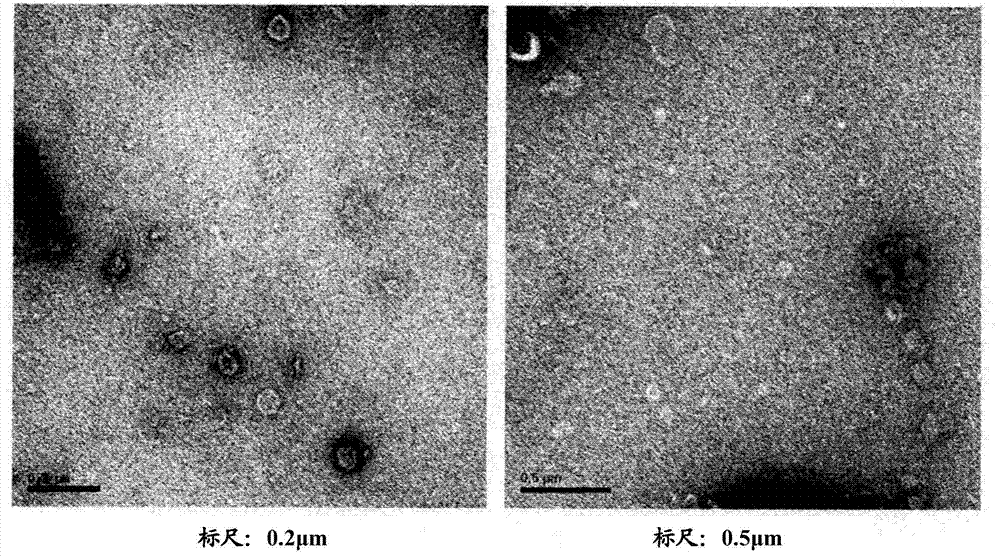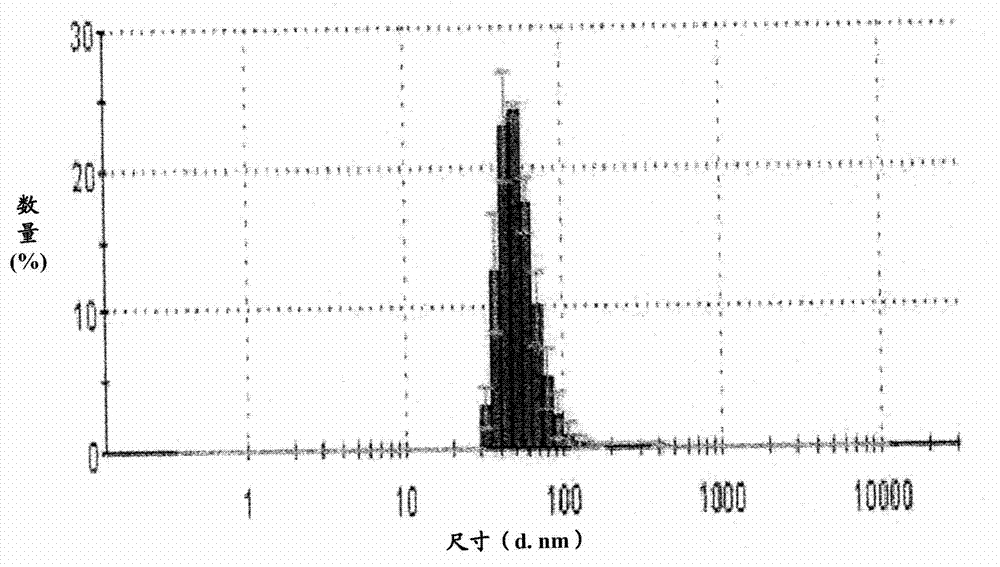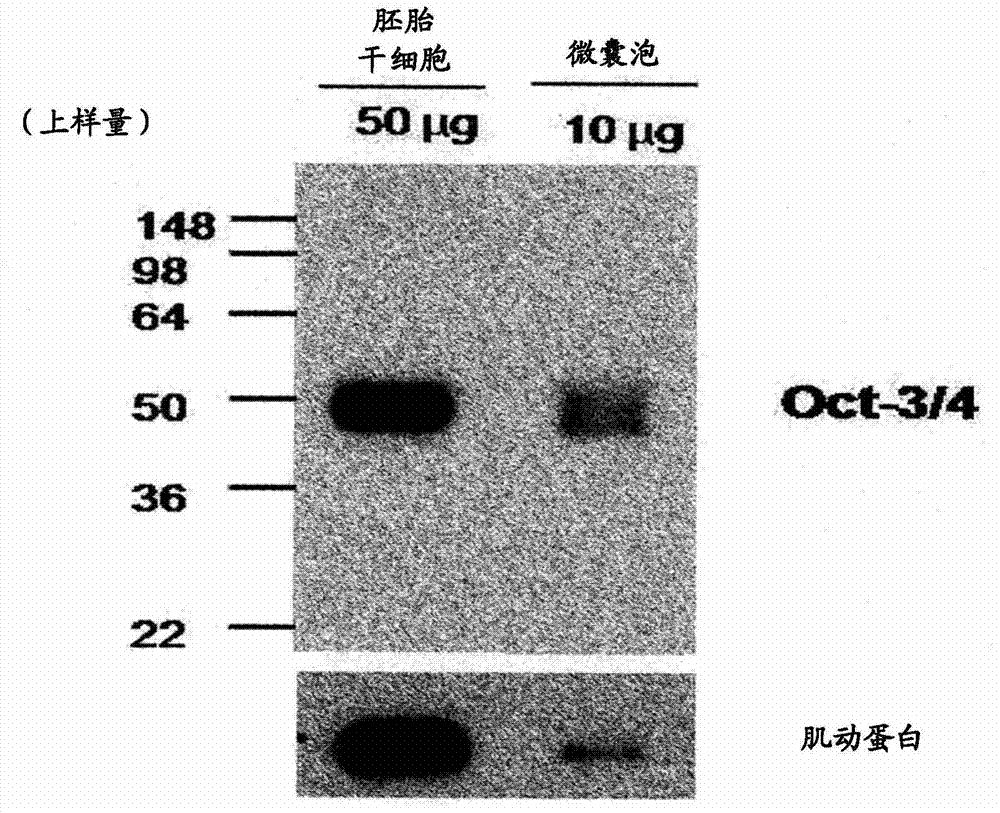Method for preparing induced pluripotent stem cells using microvesicles derived from embryonic stem cells
A technology of pluripotent stem cells and embryonic stem cells, applied in embryonic cells, animal cells, germ cells, etc., can solve the problems of damaged cells, difficult mRNA synthesis process, induction of RNA immune response, etc., to achieve low damage and high delivery. Efficiency, loss prevention effect
- Summary
- Abstract
- Description
- Claims
- Application Information
AI Technical Summary
Problems solved by technology
Method used
Image
Examples
Embodiment 1
[0045] Example 1. Preparation of Embryonic Stem Cell-Derived Microvesicles
[0046] Take 5×10 6 Resuspend mouse embryonic stem cells in 3 ml of phosphate-buffered saline (PBS) solution at a concentration of 1 cell / ml. The resuspension was passed through a membrane filter with a pore size of 10 μm 10 times and a membrane filter with a pore size of 5 μm 10 times. 1ml50% OptiPrep TM , 1ml5% OptiPrep TM and 3ml of the cell suspension that passed through the membrane filter were placed in a 5ml ultracentrifuge tube. Subsequently, ultracentrifugation was performed at 100,000×g for 2 hours. At 50% OptiPrep TM and 5% OptiPrep TM Microvesicles are obtained in the interlayer.
Embodiment 2
[0047] Example 2. Characterization of microvesicles derived from embryonic stem cells
[0048] Microvesicles prepared from embryonic stem cells according to the method described in Example 1 were adsorbed on the glow-discharged carbon-coated copper grid for 3 minutes. The mesh was washed with distilled water and stained with 2% uranyl acetate for 1 minute, and the results observed using a transmission electron microscope JEM101 (Jeol, Japan) were as follows: figure 1 shown.
[0049] Such as figure 1 As shown in the TEM images of , it can be seen that microvesicles prepared from embryonic stem cells by extrusion are composed of lipid bilayers and generally form spherical shapes with a size of 100 nm to 200 nm.
[0050] The microvesicles prepared from embryonic stem cells described in Example 1 were diluted in 1 ml of PBS to a concentration of 5 μg / ml. 1ml PBS containing microvesicles was placed in a cuvette and analyzed using a dynamic light scattering particle size analyz...
Embodiment 3
[0056] Example 3. Dedifferentiation of Somatic Cells Using Embryonic Stem Cell-Derived Microvesicles
[0057] Coat a 6-well plate with 0.1% gelatin and inoculate 8×10 4 NIH3T3 cells, incubate the cells for 24 hours. Subsequently, each well was washed with PBS, and 2 ml of microvesicles prepared from embryonic stem cells according to the method described in Example 1 were diluted in fibroblast medium (DMEM, 10% FBS, 100 U / ml penicillin-streptomycin) , to a concentration of 100 μg / ml, which was then used to treat the incubated NIH3T3 cells. After 48 hours, approximately 2 to 3 cell colonies per well were recognized, and each cell colony was approximately 10 to 100 μm in size. Cell colonies were observed using an electron microscope, and the results were as follows Figure 5 shown.
[0058] Figure 5 The results shown demonstrate the dedifferentiation of NIH3T3 cells using embryonic stem cell-derived microvesicles to induce cell colonies. Wash each well with PBS and add 4...
PUM
| Property | Measurement | Unit |
|---|---|---|
| size | aaaaa | aaaaa |
Abstract
Description
Claims
Application Information
 Login to View More
Login to View More - R&D
- Intellectual Property
- Life Sciences
- Materials
- Tech Scout
- Unparalleled Data Quality
- Higher Quality Content
- 60% Fewer Hallucinations
Browse by: Latest US Patents, China's latest patents, Technical Efficacy Thesaurus, Application Domain, Technology Topic, Popular Technical Reports.
© 2025 PatSnap. All rights reserved.Legal|Privacy policy|Modern Slavery Act Transparency Statement|Sitemap|About US| Contact US: help@patsnap.com



